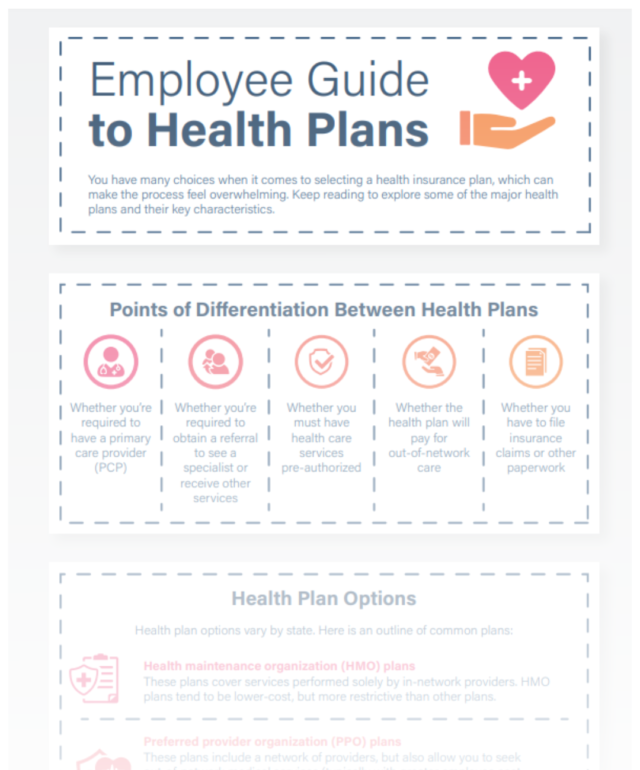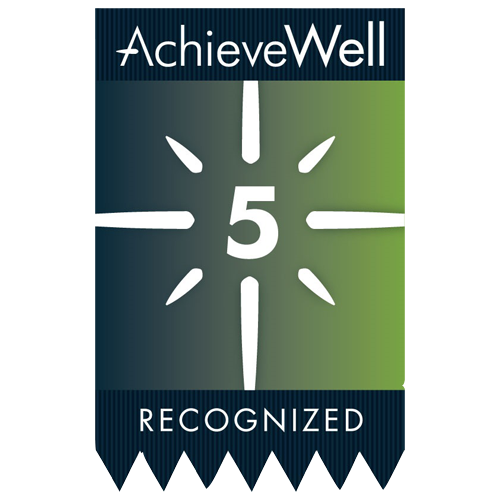Are your employees and teams aware of the difference between health plans? Leverage this guide to answer plan questions from employees and help them become more educated healthcare consumers as open enrollment approaches.
Points of Differentiation
Consider the following general points of differentiation for health insurance plans:
- Whether you’re required to have a primary care provider (PCP)
- Whether you’re required to obtain a referral to see a specialist or receive other services
- Whether you must have health care services pre-authorized
- Whether the health plan will pay for out-of-network care
- Whether you have to file insurance claims or other paperwork
- How much cost sharing (e.g., deductibles, copays and coinsurance) you’re responsible for paying when you use your health plan
Not one plan option is best for everyone. The most suitable plan will depend on your personal health, family’s health and financial situation. The following sections outline some common types of health insurance plans.
Health Maintenance Organization (HMO) Plans
An HMO plan often has low premiums and deductibles, as well as fixed copays for doctor visits. While cheap, HMO plans require the selection of only in-network providers. When you sign up for the plan, you’ll select a PCP for your routine checkups. Your PCP will need to give you a referral before you can see a specialist, such as an allergist or dermatologist.
HMO plans are generally most feasible if you don’t have many specific medical issues or needs. Although they are restrictive compared to other options, these plans tend to be cost-effective.
Preferred Provider Organization (PPO) Plans
PPO plans have pricier premiums than HMO plans, but they allow you to see specialists and out-of-network providers without referrals. Out-of-network care typically comes with greater employee cost sharing, but in-network copays and coinsurance are generally low. More paperwork is typically involved with this plan if you see out-of-network providers.
A PPO plan could be ideal if you’ll need more health care or flexible options in the coming year, but you can afford higher premiums.
Point-of-Service (POS) Plans
A POS plan is a hybrid of an HMO and PPO plan. Such a plan allows you to choose whether to use HMO or PPO services each time you receive health care. For slightly higher premiums than an HMO plan, a POS plan can cover out-of-network doctors. As such, it’ll be more beneficial and cost-effective if you initially see a PCP and seek in-network care instead of not first seeing a PCP for a referral.
A POS plan could be a good fit if you prefer out-of-network care but also want a PCP coordinating your regular care.
Exclusive Provider Organization (EPO) Plans
An EPO plan offers moderate freedom to choose your health care providers. Like HMO plans, EPO plans only cover in-network care; however, they typically don’t require specialist referrals from PCPs. Premiums are generally higher than those of HMO plans, but lower than PPO plans.
An EPO plan may make the most sense if you don’t mind having a limited number of doctors and facilities and would rather not have to get a referral to see a specialist
High Deductible Health Plans (HDHPs)
An HDHP can be designed as an HMO, PPO, POS or EPO plan. These plans have low premiums, but higher immediate out-of-pocket costs. An HDHP is often paired with a health savings account (HSA). An HSA is a tax-advantaged account used to pay for qualified medical expenses. An advantage of an HSA is that the remaining funds at the end of the plan year can be rolled
over into the account for the following year.
An HDHP might be a good option if you don’t need much medical care. As such, this type of plan is popular among young and healthy adults, but could be costly to older adults or young families.
Summary
Health insurance regulations vary by state. This article simply provides a broad overview of health plans, so be sure to read the fine print on each plan you’re considering before enrollment. Doing so is the best way to know what to expect from the health plan and what the plan expects of you. It’s also likely that employer-offered plans could be more or less expensive based on certain factors.
When comparing health plan options, consider your health, unique needs and financial situation. It’ll also be necessary to review costs, flexibility, coverage and convenience when making your decision. If you have more questions about health plans, contact HR.
Download the 2023 Employee Guide to Health Plans Infographic:






